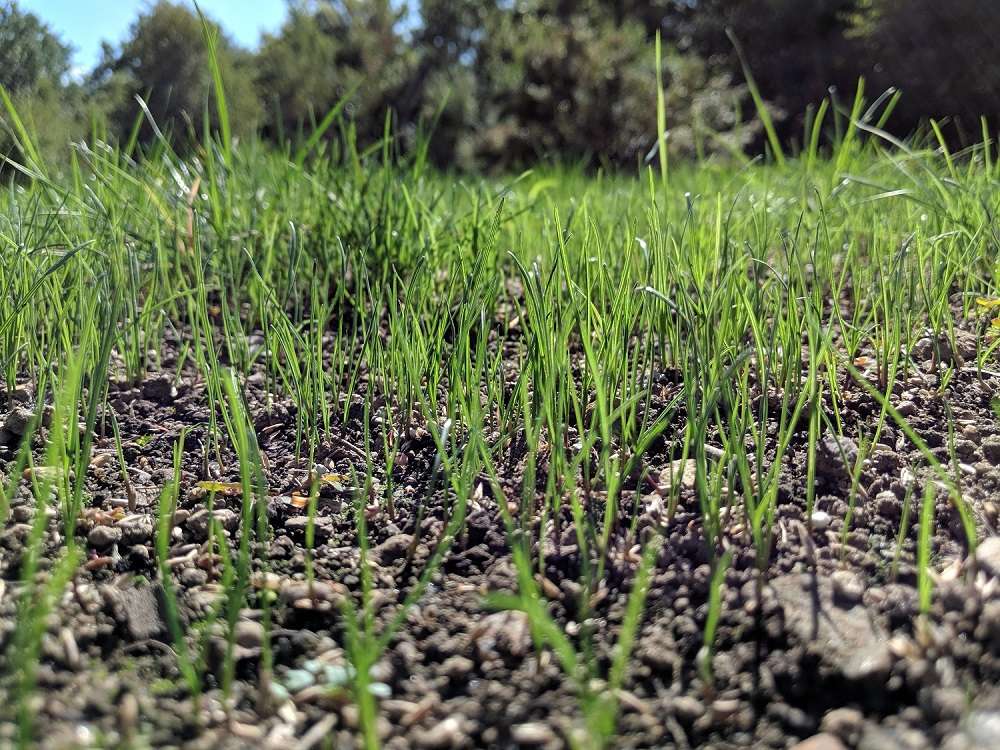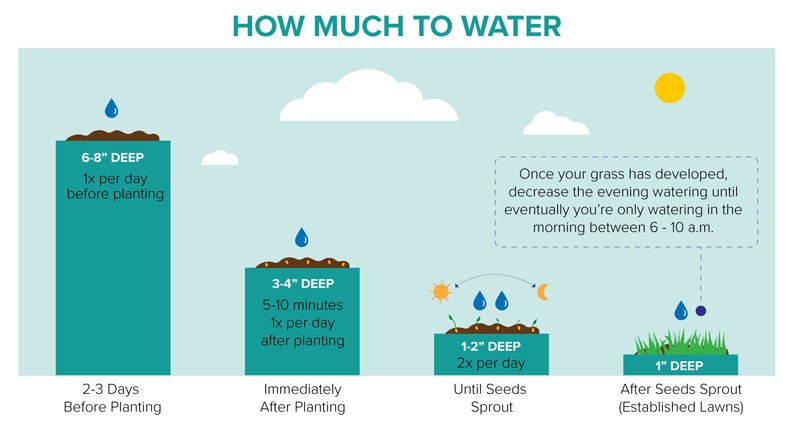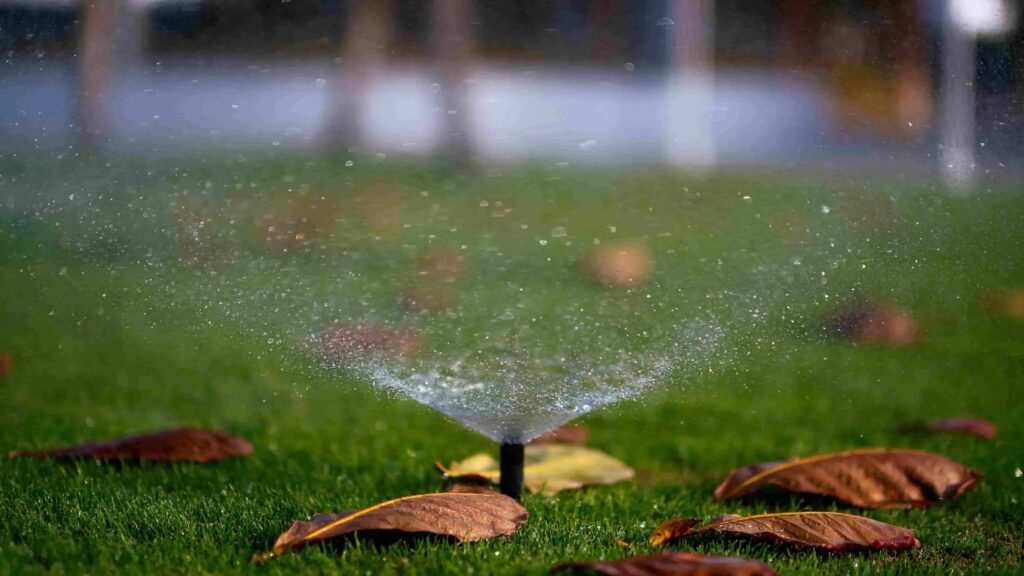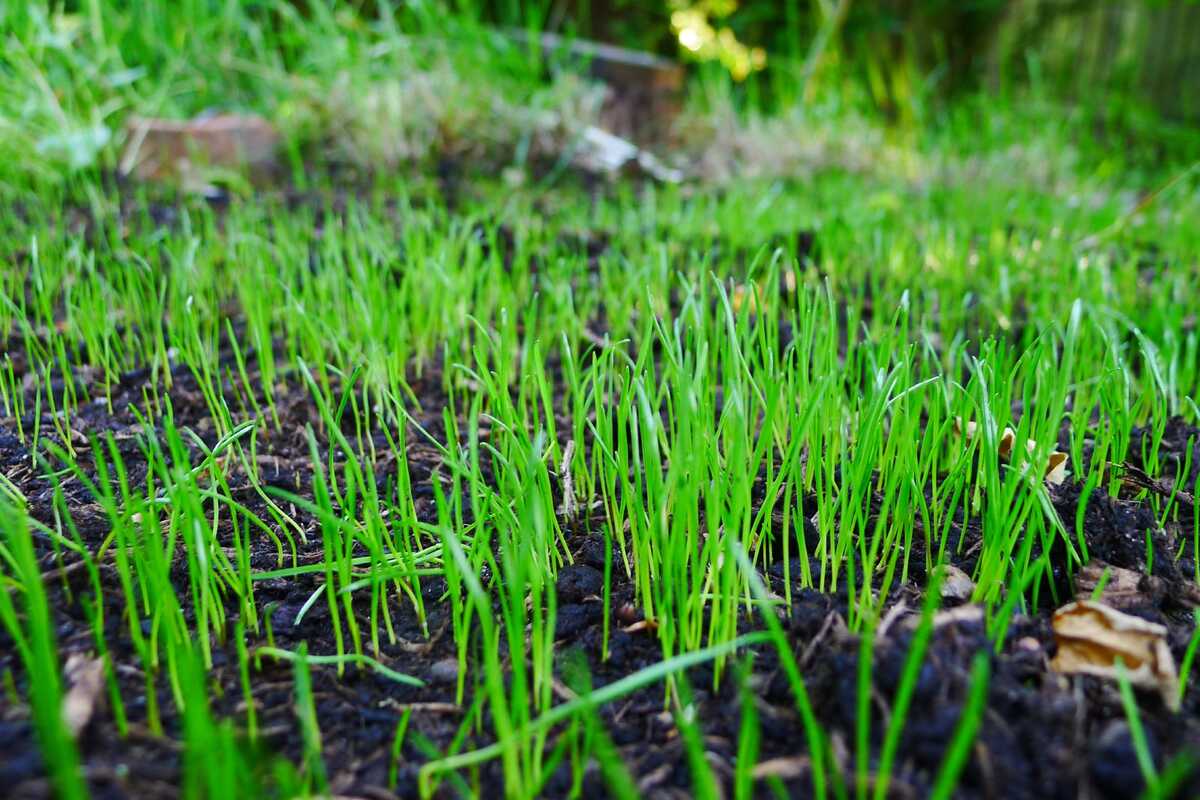Watering grass seed is a crucial aspect of establishing a lush, healthy lawn. So, how often should you water grass seed?
The frequency and amount of water needed depend on various factors such as the type of grass, soil conditions, climate, and the stage of seed germination.
Proper watering ensures that the grass seed receives the necessary moisture to sprout and grow into a strong, vibrant lawn. In this detailed guide, we’ll explore how often should you water grass seed to maximize germination and promote a thriving grassy landscape.
Understanding the Germination Process
Before delving into watering frequencies, it’s essential to understand the germination process. Grass seeds go through distinct stages, including imbibition, activation, germination, and seedling growth.
Imbibition is the initial absorption of water by the seed, which triggers metabolic activities leading to germination. During this process, the seed absorbs water and swells, initiating the growth of the embryo.
New Grass Seed Watering Frequency
Water the soil thoroughly before planting the seeds. 6 to 8 inches of water is sufficient for the soil several days before planting.
With new grass seed, the goal is to keep the soil moist. Waterlogged soil will kill the fresh seeds. It is advisable to water the grass seedlings twice or three times per day for 5 to 10 minutes each. This allows you to refill any evaporated water without oversaturation. This equates to 3-4 inches of water per week.
Once the grass seeds germinate, you should water for a longer period of time, once every day. The frequency of watering should be gradually reduced to a long soak of around 40 minutes on alternate days, then to 2-3 days per week. The goal of watering following germination is to help the grass develop deeper roots. This requires less regular irrigation.
Keep close track of the weather. Showers and heavy rain will indicate how frequently to water grass seed. Skip the watering session after it has rained.
Install a high-quality sprinkler system with a timer to help automate this operation. You might not want to get up early on a Saturday morning to water the lawn.
Factors Influencing Watering Frequency for Optimal Grass Seed Growth
Watering frequency is a critical aspect of cultivating a lush and vibrant lawn from grass seed. Various factors come into play when determining how often you should water the grass seed, each influencing the success of germination and subsequent establishment. In this comprehensive guide, we’ll delve into the key factors that impact watering frequency, providing valuable insights for nurturing your lawn from the earliest stages.
Grass Type
Different grass species have distinct water requirements. Cool-season grasses, such as Kentucky bluegrass and fescue, may need different watering schedules compared to warm-season varieties like Bermuda grass. Understanding the specific needs of the grass type you’ve seeded is crucial for optimal growth.
Soil Type
Soil composition plays a pivotal role in watering frequency. Sandy soils have a tendency to drain quickly, necessitating more frequent watering, while clayey soils retain moisture better. Knowing your soil type allows you to tailor your watering regimen to provide the appropriate amount of moisture for successful germination.

Climate
Local climate conditions, including temperature and humidity, significantly impact the evaporation rate of water from the soil. Hot and dry climates may require more frequent watering to compensate for increased water loss, while cooler climates may demand a different approach. Adapting your watering frequency to the prevailing climate is essential for maintaining the ideal soil moisture levels.
Seedbed Preparation
The condition of the seedbed plays a crucial role in water absorption. Well-prepared soil with proper compaction allows for optimal seed-to-soil contact, facilitating efficient water uptake by the grass seeds. Adequate seedbed preparation ensures the seeds have the best chance of germination by creating a favorable environment.
Seed Maturity
The stage of seed maturity influences its water requirements. During the germination phase, when the seed imbibes water and begins sprouting, maintaining consistent moisture is crucial. As the grass seedlings emerge and establish, the watering frequency can be adjusted to support their changing needs for growth and development.
Initial Watering
The first watering after seeding is crucial for initiating the germination process. Thoroughly moistening the soil allows the seeds to settle in and absorb the necessary moisture to begin sprouting. This initial watering sets the stage for the subsequent phases of grass seed growth.
Deep Watering
Encouraging deep root growth is essential for developing a resilient and drought-tolerant lawn. Deep watering ensures that the moisture reaches below the surface, prompting the grass roots to grow deeper into the soil. This helps establish a sturdy foundation for the grass, particularly during periods of limited rainfall.
Mulching
Applying a layer of mulch over the seeded area serves multiple purposes, one of which is moisture retention. Mulch helps regulate soil temperature, prevent erosion, and conserve moisture, creating an environment conducive to successful grass seed germination. It acts as a protective barrier, minimizing water loss through evaporation.
Morning Watering
Choosing the right time of day for watering is essential. Morning watering is recommended because it allows the grass to absorb moisture before the heat of the day. This reduces the risk of diseases associated with prolonged moisture on the grass blades and minimizes water loss through evaporation.
Rainfall Considerations
Monitoring natural rainfall is crucial for adjusting your watering schedule. If there’s sufficient rainfall, you may need to reduce watering frequency to avoid overwatering. Conversely, during dry periods, additional watering may be necessary to maintain optimal soil moisture levels.
Watering Guidelines for New Grass Seed
Watering newly seeded grass is a crucial aspect of lawn care that significantly influences the success of germination and the establishment of a healthy, lush lawn. In this detailed guide, we’ll explore comprehensive watering guidelines for new grass seed, offering insights into the various stages of growth and key considerations to ensure optimal moisture levels for vibrant turf.
Initial Watering
The journey of nurturing new grass seeds begins with the initial watering. After evenly distributing the seeds across the designated area, it’s essential to provide a thorough and gentle watering. This initial moisture kickstarts the germination process by allowing the seeds to imbibe water and initiate the metabolic activities required for sprouting.

Frequency for Germination
During the germination phase, consistency is key. Aim to keep the soil consistently moist to facilitate the emergence of tiny grass shoots. Light, frequent watering is recommended during this stage. Water daily or as needed to prevent the soil from drying out, ensuring that the delicate new roots have access to the moisture essential for their growth.
Gradual Transition to Establishment
As the grass seedlings emerge and begin to establish themselves, it’s time to transition from frequent, light watering to less frequent but deeper watering. This gradual adjustment encourages the development of robust root systems, enabling the grass to access moisture from deeper layers of the soil. The establishment phase is crucial for building a resilient and healthy lawn.
Deep Watering Practices
Deep watering promotes deep root growth, a fundamental factor in creating a drought-resistant lawn. To achieve this, adjust your watering practices to penetrate the soil deeply. Ensure the water reaches at least 4-6 inches below the surface to encourage the grass roots to grow downward, enhancing their ability to access water during dry periods.
Morning Watering
Timing is essential when it comes to watering newly seeded grass. While it’s acceptable to water in the evening, morning watering is generally recommended. This allows the grass to absorb moisture before the heat of the day, reducing the risk of diseases associated with prolonged leaf wetness and minimizing water loss through evaporation.
Monitoring Soil Moisture
Regularly monitor the soil moisture to make informed decisions about your watering schedule. A simple check involves digging a small hole in the soil. If the top inches are dry, it’s an indication that watering is needed. Adjust your watering frequency based on the soil moisture levels, ensuring a balance between hydration and avoiding waterlogged conditions.
Adjusting for Rainfall
Consider natural factors such as rainfall when determining your watering schedule. If there is sufficient rainfall, adjust your watering routine accordingly to prevent overwatering. Monitoring weather forecasts and adapting to changing conditions ensures that your lawn receives the right amount of moisture without unnecessary watering during wet periods.
Mulching for Moisture Retention
Mulching is a valuable practice for retaining soil moisture during the delicate stages of grass seed growth. Apply a thin layer of organic mulch over the seeded area to regulate soil temperature, prevent erosion, and conserve moisture. Mulch acts as a protective barrier, reducing water loss through evaporation and creating an environment conducive to successful germination.
Avoiding Waterlogged Soil
While moisture is essential, it’s equally important to avoid waterlogged soil. Overly compacted or waterlogged conditions inhibit oxygen uptake by the roots, potentially leading to root rot and other issues. Ensure proper drainage in your lawn to prevent these challenges, promoting a healthy and thriving grass ecosystem.
Adapting Watering Practices to Seed Mix
Different seed mixes may have specific watering requirements. Pay attention to the recommendations on the seed package or consult with a local gardening expert. Adapting your watering practices to the specific needs of the grass variety you’ve chosen ensures optimal conditions for successful germination and growth.
Signs of Overwatering and Underwatering
Overwatering
Puddles, water runoff, and excessively soggy soil are signs of overwatering. This can lead to shallow root development and increased susceptibility to diseases.
Underwatering
Wilting, yellowing, or browning of grass blades indicate insufficient water. Inadequate watering can result in stunted growth and patchy germination.

How Often Should You Water Grass Seed? – FAQs
What is the best time to water newly seeded grass?
Morning watering is ideal, as it allows the grass to absorb moisture before the heat of the day, reducing the risk of diseases and water loss through evaporation.
What grass seeds grow the fastest?
Perennial Ryegrass is one of the fastest sprouting grass seed types; it germinates in 5-10 days and produces baby grass plant shoots in your soil during this time. Other grasses, such as bent and fescue, germinate quickly but require a greater ground temperature.
How deep should I water the grass during the establishment phase?
Deep watering is recommended to promote deep root growth. Ensure the water penetrates the top 4-6 inches of soil for optimal results.
What are the signs of overwatering newly seeded grass?
Puddles, water runoff, and excessively soggy soil are signs of overwatering, which can lead to shallow root development and increased susceptibility to diseases.
Why is mulching important when watering grass seed?
Mulching helps retain soil moisture, regulate temperature, and prevent erosion, creating optimal conditions for grass seed germination.
What type of sprinkler is best for new grass seed?
The spray pattern of an oscillating sprinkler is ideal for new grass seed. Multiple streams from an oscillating sprinkler generate a soft fan of water that flows back and forth, making it the ideal lawn sprinkler for newly seeded or newly planted areas.
Can I water grass seed at night?
While it’s generally recommended to water in the morning, watering at night is acceptable. However, morning watering reduces the risk of diseases and evaporation.
What is the role of soil type in determining watering frequency for grass seed?
Soil composition influences water retention. Sandy soils may require more frequent watering, while clay soils retain moisture better, affecting the overall watering needs for grass seed.
What is the best time to water your lawn?
Timing is essential for successful watering. Water in the early morning, between 6 and 10 a.m. Midday watering promotes wasteful evaporation, whereas nighttime watering causes droplets to stick to grass overnight, increasing the risk of lawn diseases.
Conclusion
How often should you water grass seed? The frequency of watering grass seed depends on various factors, and a tailored approach is necessary for successful lawn establishment.
Begin with frequent, light watering during germination, gradually transitioning to deeper, less frequent watering as the grass matures. Monitoring soil moisture, adjusting based on weather conditions, and paying attention to signs of overwatering or underwatering are key components of effective lawn care.
By following these guidelines, you can ensure your grass seed has the best chance of germination and growth, resulting in a lush and healthy lawn.


